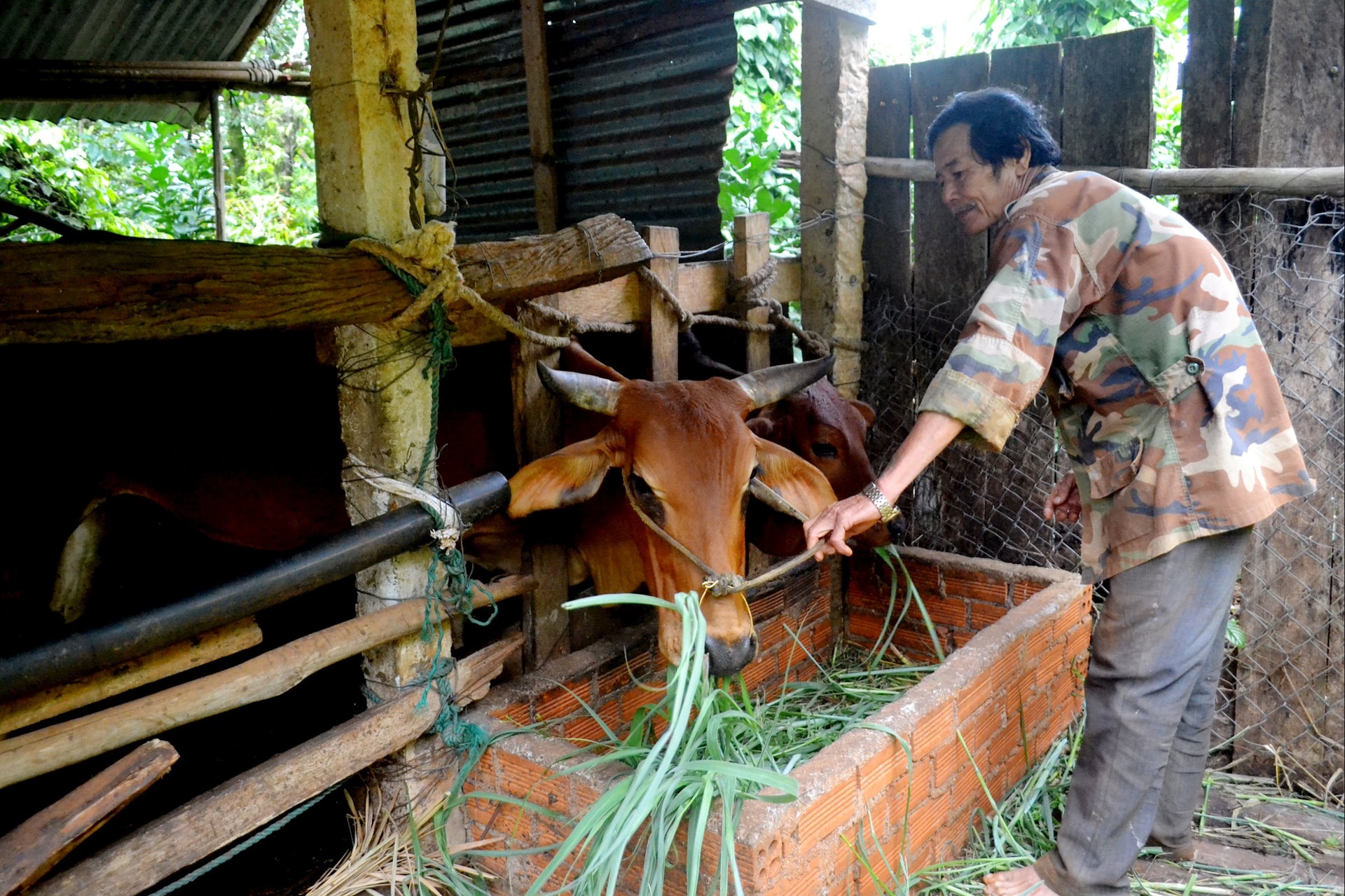
Popular forms of livestock farming
For many years, Ms. Trinh Thi Phuong, village 1A, Quang Tan commune has maintained household livestock farming with about 10 sows and pigs per litter. Ms. Phuong said that she maintains small-scale livestock farming because she does not have a large amount of capital to invest in barns, breeding animals and other livestock farming conditions. Despite the small scale, her family still has a decent income each year. Moreover, she can take advantage of her free time labor and agricultural by-products.
According to Mr. Le Tien Lien - Vice Chairman of Quang Tan Commune People's Committee, the locality currently has 14 livestock farms but has up to 400 livestock households, of course the number of farm animals is many times larger than the number of household animals. With the condition of being a remote commune, life is still difficult, the number of ethnic minority households is high, household livestock farming is still considered by the locality as a quite important form of economic development. Quang Tan improves the effectiveness of State management such as: inspection, control, vaccination. The government and organizations propagate and mobilize people to apply biosafety livestock farming processes to minimize the risk of damage due to the appearance and spread of diseases.
In the western part of the province, in recent years, livestock farming has made new progress with many large-scale farms. However, in comparison, the household-scale livestock farming still accounts for a very high proportion, about 80 - 90% of the livestock farming subjects in the area, equivalent to about 14,000 households.
In the central area of the province, there are currently about 28,000 households raising livestock. According to leaders of many localities, household raising livestock in the province has limitations in technology, low productivity, and low product quality. Therefore, in the process of restructuring the entire livestock sector, household raising livestock will have to have appropriate arrangements in many aspects and contents. Specifically, in terms of livestock raising methods, emphasizing factors of ensuring biosafety; product groups; restructuring investment, developing livestock raising areas suitable for sub-climatic zones and farming practices.
Specialty livestock farming associated with tourism and experience
With the idea of utilizing agricultural by-products such as banana tree trunks, corn, jackfruit, Mr. Nguyen Thanh Doan's family, village 5, Nhan Co commune, raised wild boars. From only having 2 pairs of pigs, after 3 years of raising, he now has a herd of about 50 large and small pigs. Mr. Doan commented: "I see that wild boars have strong resistance, low raising costs, while the high quality of meat always gives higher economic efficiency, less dependent on the market".
Not only Mr. Doan's family, currently, some households raising livestock in the province have raised some specialties such as: wild boar, bamboo rat, deer, chicken, native goat. According to the people, raising specialties has advantages such as: being able to take advantage of natural food sources, good resistance, delicious meat products so they are always favored by the market.
However, in many places, this type of livestock farming in the province is still spontaneous and small-scale, without groups or cooperatives, and the connection with other economic forms such as tourism and sightseeing experiences is not widespread. The creation of links between households to have large quantities of goods, linked with slaughter to ensure hygiene and safety, and consumption needs to be strongly promoted. Solving this group of problems will help household livestock farming have better opportunities to develop.
Source: https://baolamdong.vn/tim-huong-di-cho-chan-nuoi-nong-ho-393763.html


![[Photo] General Secretary To Lam chairs the meeting of the Central Steering Committee on preventing and combating corruption, waste and negativity](https://vphoto.vietnam.vn/thumb/1200x675/vietnam/resource/IMAGE/2025/9/29/fb2a8712315d4213a16322588c57b975)

![[Photo] National Assembly Chairman Tran Thanh Man chairs the 8th Conference of full-time National Assembly deputies](https://vphoto.vietnam.vn/thumb/1200x675/vietnam/resource/IMAGE/2025/9/29/2c21459bc38d44ffaacd679ab9a0477c)
![[Photo] General Secretary To Lam receives US Ambassador to Vietnam Marc Knapper](https://vphoto.vietnam.vn/thumb/1200x675/vietnam/resource/IMAGE/2025/9/29/c8fd0761aa184da7814aee57d87c49b3)
![[Photo] General Secretary To Lam attends the ceremony to celebrate the 80th anniversary of the post and telecommunications sector and the 66th anniversary of the science and technology sector.](https://vphoto.vietnam.vn/thumb/1200x675/vietnam/resource/IMAGE/2025/9/29/8e86b39b8fe44121a2b14a031f4cef46)
![[Photo] Many streets in Hanoi were flooded due to the effects of storm Bualoi](https://vphoto.vietnam.vn/thumb/1200x675/vietnam/resource/IMAGE/2025/9/29/18b658aa0fa2495c927ade4bbe0096df)




















































































![[Infographics] An Giang tourism makes a spectacular breakthrough](https://vphoto.vietnam.vn/thumb/402x226/vietnam/resource/IMAGE/2025/9/30/e472f9f3f91d407ba4b7de460fb0481d)












Comment (0)